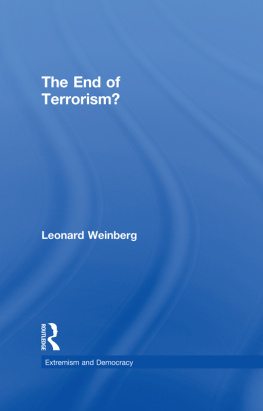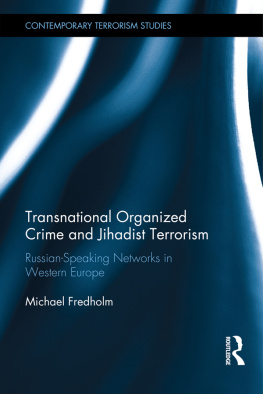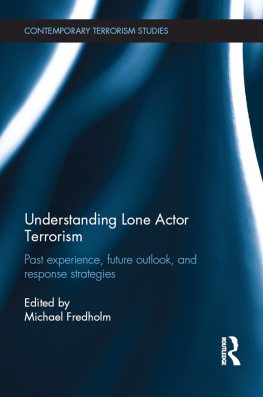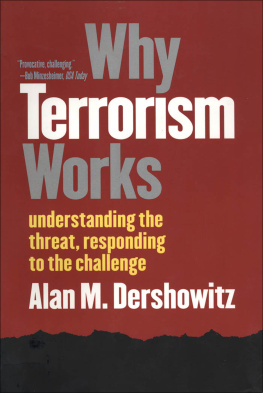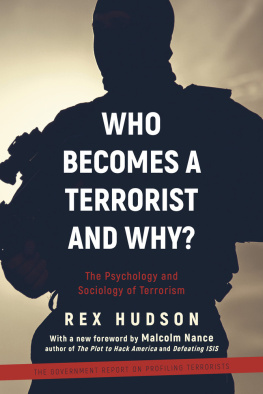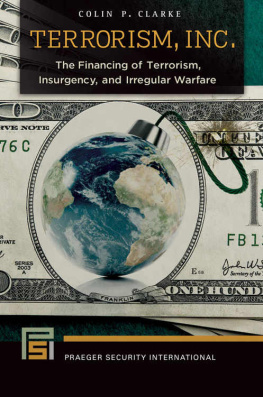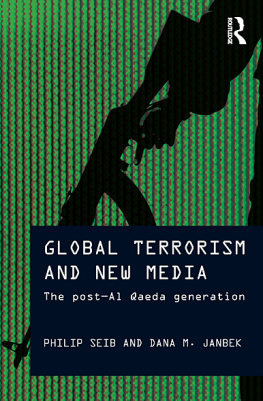TERRORISM AS CRIME
ALTERNATIVE CRIMINOLOGY SERIES
General Editor: Jeff Ferrell
Pissing on Demand
Workplace Drug Testing and the Rise of the Detox Industry
Ken Tunnell
Empire of Scrounge
Inside the Urban Underground of Dumpster Diving, Trash Picking, and
Street Scavenging
Jeff Ferrell
Prison, Inc.
A Convict Exposes Life inside a Private Prison
K. C. Carceral, edited by Thomas J. Bernard
Terrorism as Crime
From Oklahoma City to Al-Qaeda and Beyond
Mark S. Hamm
MARK S. HAMM
TERRORISM AS CRIME
From Oklahoma City to Al-Qaeda and Beyond
NEW YORK UNIVERSITY PRESS
New York and London
www.nyupress.org
2007 by New York University
All rights reserved
Library of Congress Cataloging-in-Publication Data
Hamm, Mark S.
Terrorism as crime : from Oklahoma City to Al-Qaeda and beyond / Mark S. Hamm.
p. cm.
Includes bibliographical references and index.
ISBN-13: 978-0-8147-3695-1 (cloth : alk. paper)
ISBN-10: 0-8147-3695-5 (cloth : alk. paper)
ISBN-13: 978-0-8147-3696-8 (pbk. : alk. paper)
ISBN-10: 0-8147-3696-3 (pbk. : alk. paper)
1. Terrorism. 2. Radicalism. 3. TerrorismUnited States.
4. RadicalismUnited States. 5. Criminology. I. Title.
HV6431.H364 2006
364.1dc22 2006029835
New York University Press books are printed on acid-free paper, and their binding materials are chosen for strength and durability.
Manufactured in the United States of America
c 10 9 8 7 6 5 4 3 2 1
p 10 9 8 7 6 5 4 3 2 1
For New Orleans
Let history be a witness that I am a criminal.
Osama bin Laden
Quoted in The 9/11 Commission Report.
Contents
Criminal Stupidity and the Age of Sacred Terrorism:
The First World Trade Center Bombing
Vulnerabilities of the JihadPrelude to 9/11:
The U.S. Embassy Bombings in Kenya and Tanzania
The Legacy of Lost Causes:
The Covenant, the Sword, and the Arm of the Lord
The Seduction of Terrorist Mythology:
The Aryan Republican Army
Al-Qaeda, the Radical Right, and Beyond:
The Current Terrorist Threat
Acknowledgments
Buddhists say that the secret of Zen lies in just two words: not always so. Much the same can be said of terrorism, and I have many to thank for helping me search for answers.
For their patience with things I have no patience for, thanks to Jennifer Brown, Peggy Strobel, David Skelton, and Charles Norman at Indiana State University.
For bringing this research the light of print, I thank Ilene Kalish at New York University Press.
The ideas flowing through this work were shaped by an outstanding group of scholars. Thanks to Pat Lauderdale, Henry Brownstein, Marcus Felson, Ronald Akers, Gregg Barak, Bob Bohm, Victoria Bedford, and Lynn Chancer. Thanks also to veteran terrorism researchers Brent Smith, Kelly Damphousse, Christopher Hewitt, Jeff Ross, Josh Frelich, Adam Silverman, Mark Potok, and Brian Levin.
I owe a special thanks to Jeff Ferrell and Mike Presdee for their humor when the clouds gathered; and to Ken Tunnell, Fran Hoffmann, Cecile Van de Voorde, and Terry Cox for their kindness when the rains came.
To Lou Hamm and Marla Sandys, I owe something more than thanks.
Proceeds from this book go to the New Orleans Musicians Relief Fund, a non-profit support group founded in response to the devastation of Hurricane Katrina.
Introduction
The Criminology of Terrorism
Our world is flooded with images of terror. Each day, it seems, we are hammered by a televised rain of suicide bombings, mass murders, and assassinations. Historically this represents a seismic shift in the nature of terrorism, a shift from the symbolic to the concrete. Nowhere is this change more evident than in the media reporting of violence committed in the name of Islamic extremism.
Live terrorist TV was born at the 1972 Summer Olympics in Munich when the Palestinian group Black September broke into the dormitory rooms of the Israeli team and took eleven athletes and coaches hostage. As some 900 million television viewers followed attempts made by German authorities to negotiate with the guerrillas, cameras captured extraordinary footage of a lone Palestinian gunman, his head covered by a dark hood, standing on a balcony of the dormitory. In the end, though, things went terribly wrong, and the terrorists killed all of their hostages. Yet these murders were carried out in secret, far from the cameras eye, and Munich was framed as a political crisis of the Middle East.
In contemporary America, terrorism garners a disproportionately large share of news coverage where it is typically presented through the frame of private storiesstories of fallen firefighters, soldiers, airline pilots, subway riders, and others. As such, television reporting highlights the personal (and the extremely emotional) aspects of terrorisms global criminal threat at the expense of its broader political content. For American viewers, this human focus has resulted in a nightly ritual of random death, which exposes the public to images symbolizing the nations vulnerabilities. Through international satellite television networks and the video capabilities of the World Wide Web, millions of people are now able to watch hijackings, torture, missile firings, and suicide bombings. Today, not only can we watch terrorists trample and hack their victims to death; we can even watch beheadings over the Internet.
The hard rain of awful imagery demonstrates that the whole point of terrorism is fear. And fear, as it turns out, has unleashed a longstanding American fascination with Christian doomsday prophecy. This has led to a spectacular rise in sales for books, movies, and music with apocalyptic themessome of which has been remarkably prescient. Some things are just too terrible to be true, growled Bob Dylan on Love and Theft, his nightmarish album of dread and uncertainty, eerily released on September 11, 2001the same day, of course, that al-Qaeda perpetrated the single greatest act of terrorism in human history. Shortly thereafter, Time/CNN conducted a poll showing that four out of every ten Americans thought about the implications of the daily news for the end of the world, and six out of ten believed the future would unfold in accordance with the Book of Revelation. Yet beyond the grisly headlines and doomsday prophesies a far more important change is now taking place in the world of terrorism itself.
Throughout the postWorld War II era, terrorism was strategic warfare on the cheap. Terrorism was state-sponsored, low-level military activity which used the threat of violence to influence international relations. Terrorism, as the saying goes, was diplomacy by other means. Since the collapse of communism, however, there has been a marked decline in state-sponsored terrorism. Instead, terrorists are increasingly turning to criminal activity as an alternative means of support.
This development represents a privatization of terrorism that parallels the movement by many nations in the past decade to convert their state-supported industries to privately owned companies. Although the criminal methods used by terrorist groups range from the highly sophisticated to the most basic, they all serve a common purpose: the crimes provide


